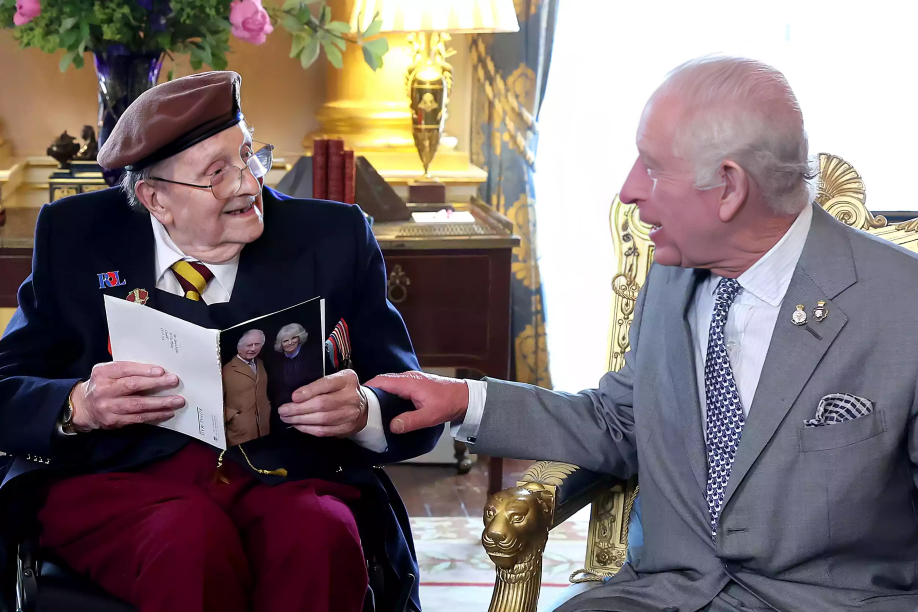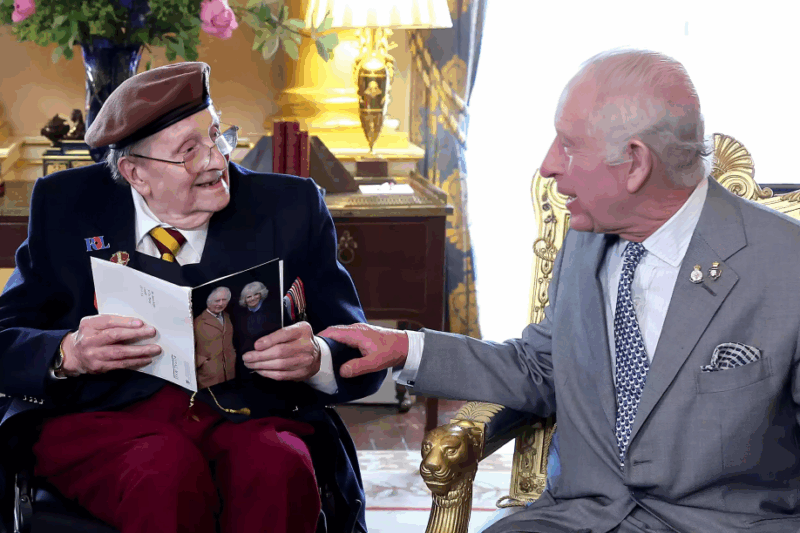
When Britons turn 100, the milestone isn’t only celebrated by family and friends alone, but sometimes also by the British monarchy. This is a royal tradition that has endured for more than a century and has been passed down from one monarch to another.
At 116 years old, Ethel Caterham is currently the world’s oldest verified living person, and the Guinness World Records announced this on 30 April 2025. She recently met King Charles III, and more than a photo-op, it was a continuation of tradition, history, and national respect for longevity.
Born in 1909, before the sinking of the Titanic, before the First World War began and even before Einstein published his theory of general relativity, she bridges eras in living memory.
Her meeting with the King symbolises a longstanding British tradition of sending congratulatory messages to citizens who have attained 100 years and beyond.
What is this tradition, and how does it work?
The practice of the monarch sending messages to centenarians in the UK has its formal roots in 1917, under King George V, who initiated it by issuing telegrams for milestone birthdays and anniversaries. Cards were sent to those celebrating their 100th and 105th birthday and then every year thereafter.
They were also sent to those celebrating their diamond wedding anniversaries (60th, 65th, 70th), and every year thereafter. Although only current citizens of His Majesty’s Realms (countries where the King is Head of State) or UK Overseas Territories are eligible to receive this, the delivery of these messages is arranged by the Anniversaries Office at Buckingham Palace.
The Centenarian Team at the Department for Work and Pensions notifies the Anniversaries Office of those approaching their milestone birthday to ensure everyone receives a message, so it is not necessary to make an application.
However, for others, especially those not on benefits or those living outside the UK, there is a requirement to apply via a published online form.
The cards are often dispatched by Royal Mail with a personal message and the monarch’s signature. However, in rare circumstances, the monarch may deliver a card in person.
For example, it was reported that King Charles and Queen Camilla personally handed one to Rona Grafton during a royal away day in Middlesbrough in February 2025.
What this gesture symbolises
To many centenarians and their families, the royal card is more than a piece of stationery. They see it more as a symbol of recognition, a precious moment when the Crown formally acknowledges an individual’s long life. Who wouldn’t love that?
In fact, it has been reported that some families view it as a prized keepsake, passed down from one generation to the next, as a reminder of a living tradition and a sense of belonging.
In one case, a 101-year-old World War II veteran in Kent, Arthur Orbone, described receiving his royal card as a moment of honour he’ll never forget. This further proves that, indeed, recognition from the monarch can feel deeply affirming and equally fulfilling.
Longevity trend in the UK
The UK is reportedly experiencing a steady increase in centenarians. According to a 2024 report by King’s College London, 15,120 centenarians were living in England and Wales as of mid-2023.
This is a record high, more than double the number reported in 2002, which was 6,920. The Guardian reported, however, that the number dipped slightly in the latter part of 2023 to 14,850.
According to King’s College London, several factors contribute to this longevity trend in the UK. Some of these factors include advances in healthcare, improved nutrition, reduced infant mortality, and better support for individuals with chronic diseases.
However, the rising numbers of centenarians also pose particular challenges, such as sustaining social care, housing, mental health, and quality of life for the very elderly.
While a royal card is meaningful, it is also symbolic. Critics argue that recognising centenarians should be complemented by tangible support systems, such as improved access to home care, enhanced mobility infrastructure, intergenerational programs, and social inclusion initiatives, to ensure society matches this living tradition with substance.
Comparison to other countries
The UK’s tradition is not unique in celebrating elders, but the royal personal touch is rare, making it incomparable to others. In Japan, the national holiday, Respect for the Aged Day, which was established in 1963, honours the country’s older citizens. Initially, centenarians used to receive a commemorative gift of silver sake cups.
But Japan’s government changed the commemorative gift for centenarians due to the rising number of recipients, making the original sterling silver sake cups too expensive. It has since been altered twice to contain costs.
In the United States, centenarians can receive congratulatory letters from the President, while many state and local governments offer their own recognition programs. Unlike the UK, which automatically sends greetings, the recognition in the U.S. is not automatic and must be requested.
In contrast to the UK, Nigeria does not have a formal policy of recognising citizens who reach 100 years of age. We do not have government-issued messages or institutionalised honours tied to this milestone.
Instead, we have celebrations based on family arrangements to celebrate the lives of their elderly ones. However, some of these elders are sometimes awarded titles in their respective religious institutions.
Several other countries also maintain a continuous symbolic link between heads of state and their centenarian citizens, similar to the UK. But the UK’s monarchy’s greeting acts as a bridge between the nation and its citizens.
Ethel Caterham’s meeting with King Charles and many others from centuries back is a living testament to how the UK honours longevity and maintains tradition.
From 100 onward, each royal card marks a hundred years lived, and for many, it is the most public acknowledgement they will ever receive in their lifetime.








